Search parts
-
Year
Make
Model
Sub Model - Drive Type
- 2024
- 2023
- 2022
- 2021
- 2020
- 2019
- 2018
- 2017
- 2016
- 2015
- 2014
- 2013
- 2012
- 2011
- 2010
- 2009
- 2008
- 2007
- 2006
- 2005
- 2004
- 2003
- 2002
- 2001
- 2000
- 1999
- 1998
- 1997
- 1996
- 1995
- 1994
- 1993
- 1992
- 1991
- 1990
- 1989
- 1988
- 1987
- 1986
- 1985
- 1984
- 1983
- 1982
- 1981
- 1980
- 1979
- 1978
- 1977
- 1976
- 1975
- 1974
- 1973
- 1972
- 1971
- 1970
- 1969
- 1968
- 1967
- 1966
- 1965
- 1964
- 1963
- 1962
- 1961
- 1960
- 1959
- 1958
- 1957
- 1956
- 1955
- 1954
- 1953
- 1952
- 1951
- 1950
- 1949
- 1948
- 1947
- 1946
- 1945
- 1944
- 1943
- 1942
- 1941
- 1940
-
Results For
-
-
-
State
- Alabama
- Alaska
- American Samoa
- Arizona
- Arkansas
- California
- Colorado
- Connecticut
- Delaware
- District Of Columbia
- Federated States Of Micronesia
- Florida
- Georgia
- Guam
- Hawaii
- Idaho
- Illinois
- Indiana
- Iowa
- Kansas
- Kentucky
- Louisiana
- Maine
- Marshall Islands
- Maryland
- Massachusetts
- Michigan
- Minnesota
- Mississippi
- Missouri
- Montana
- Nebraska
- Nevada
- New Hampshire
- New Jersey
- New Mexico
- New York
- North Carolina
- North Dakota
- Northern Mariana Islands
- Ohio
- Oklahoma
- Oregon
- Palau
- Pennsylvania
- Puerto Rico
- Rhode Island
- South Carolina
- South Dakota
- Tennessee
- Texas
- Utah
- Vermont
- Virgin Islands
- Virginia
- Washington
- West Virginia
- Wisconsin
- Wyoming
SUSPENSION COMPONENTS
DESIGNED FOR A SMOOTH AND SAFE RIDE
ENGINEERED FOR TECHNICIANS
Designed for a smooth ride.
Optimize vehicle ride, performance and handling
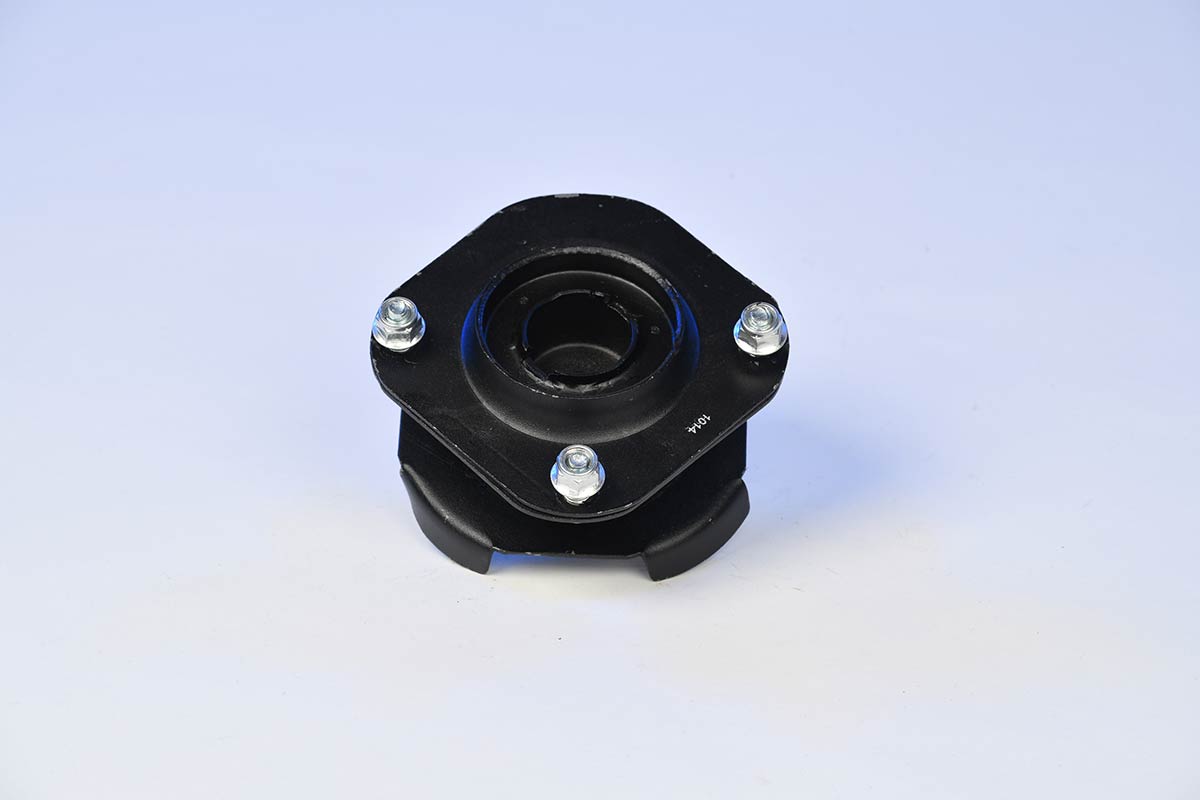
Strut Mounts
DESIGNED TO CUT CABIN NOISE AND VIBRATION
Why Are Strut Mounts Important?
Strut mounts connect the strut system to the body of your vehicle. They have two main purposes; they function as vibration dampeners to reduce in-cabin noise and vibration, and when fitted on the front they provide a steering pivot point that assists suspension movement when wheels are turned. Strut mounts must be flexible enough to handle slight angle changes yet be able to transfer vehicle load to the coil springs.
Bushings
BUILT TO CUT VIBRATION AND IMPROVE HANDLING
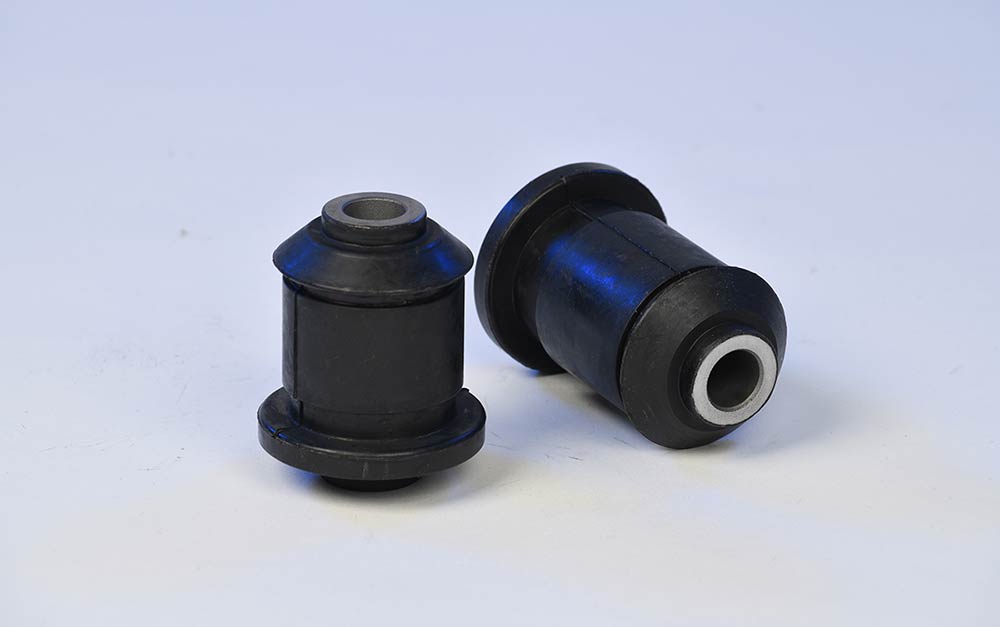
Why Are Bushings Important?
Bushings isolate and reduce transmitted noise, road shock and vibration. Creating pivot points for suspension components as your vehicle is in motion, they can also provide a smooth ride, assist in correct vehicle tracking and maintain original handling characteristics.
In properly working bushings, the rubber portion should allow the suspension system to twist and move in response to the road. Bushings that are in good condition act as a kind of sponge, absorbing vibration and motion with only minimal transmission to the passenger cabin.
Common bushing types include:
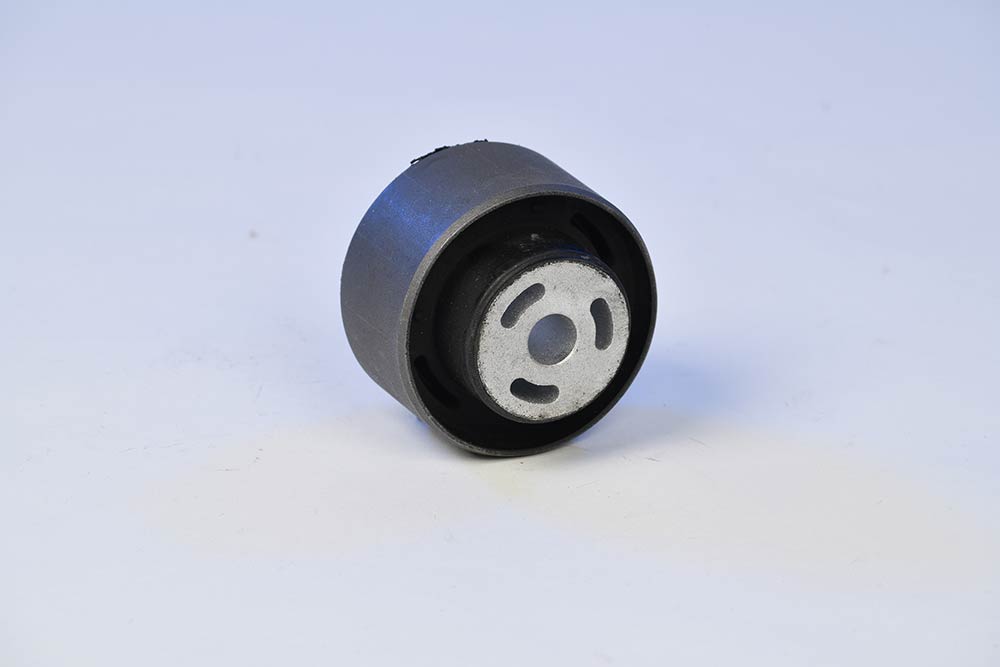
Control Arm
Control arm bushings help maintain the lateral and vertical location of the control arm and the chassis-side mounting point. They usually consist of an outer metal sleeve, a rubber or polyurethane bushing, and an inner metal sleeve.
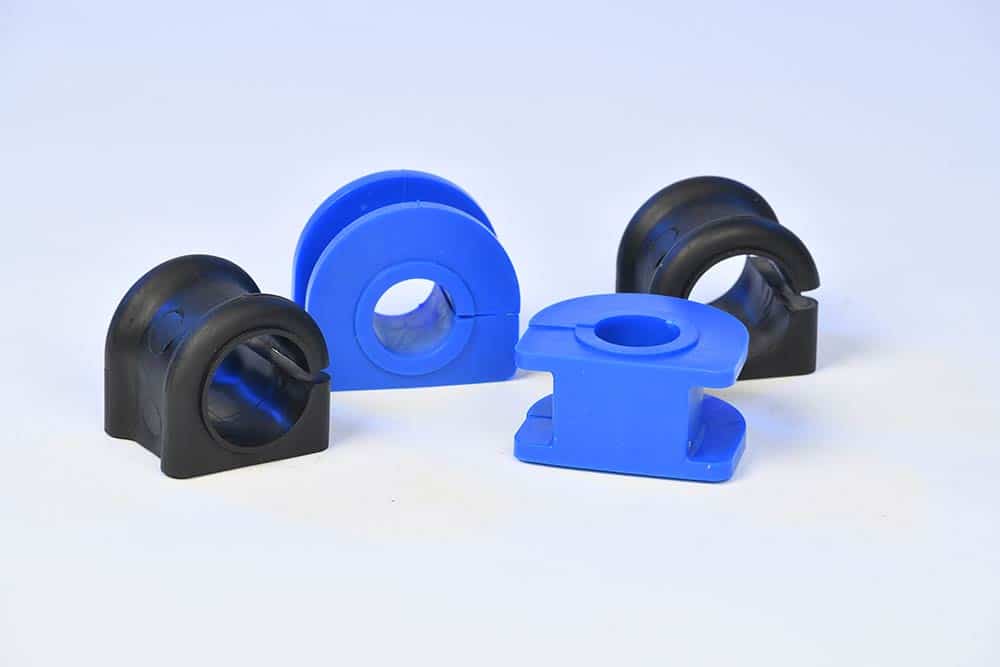
Stabilizer Bar
Stabilizer bar bushings allow the stabilizer bar to float and react to the movement of your vehicle while in motion. This assists in preventing vehicle roll while cornering.
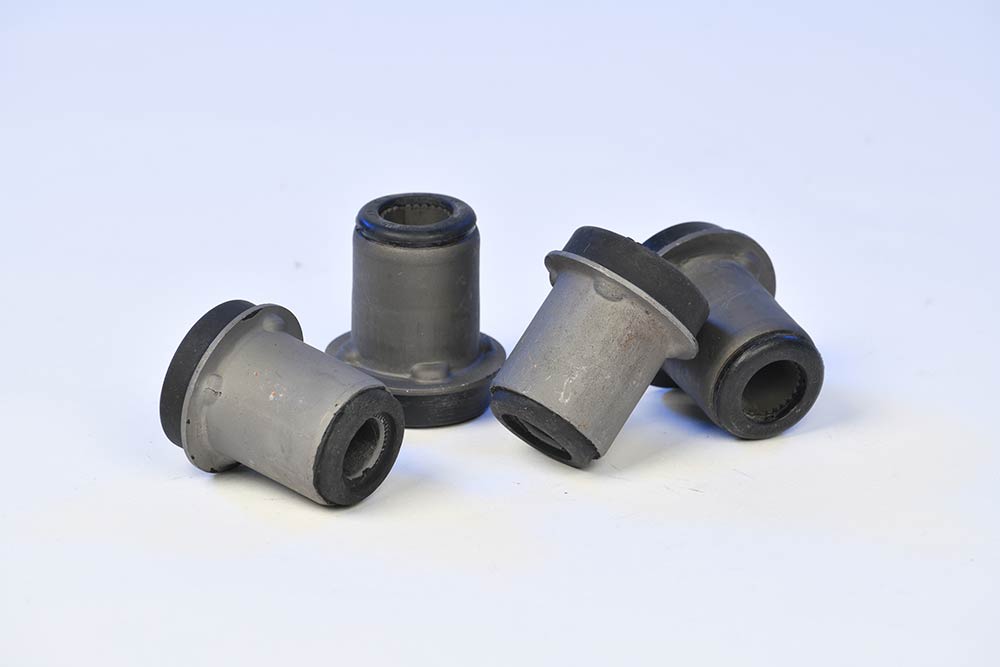
Rack and Pinion
Rack and pinion mount or steering rack bushings insulate road noise from the cabin of your vehicle and create a firm mounting point for the steering system.

Axle
Axle bushings can be used in both the front and rear of some vehicle suspension configurations to allow the axle to pivot without binding.
When your vehicle is in motion, axial and radial movement of the suspension system, combined with the excess heat generated by vehicle components, may cause bushings to twist and stretch. Constant exposure to road debris, salt and other contaminants also contribute to wear and can lead to hardening, cracking and tearing of the bushing material. When this normal wear is compounded by rough road conditions or by worn or defective shock absorbers, bushing life can be further shortened.
To ensure optimal part life, bushings should be made of quality material and be designed to minimize noise, vibration and harshness (NVH) while retaining factory vehicle handling characteristics.
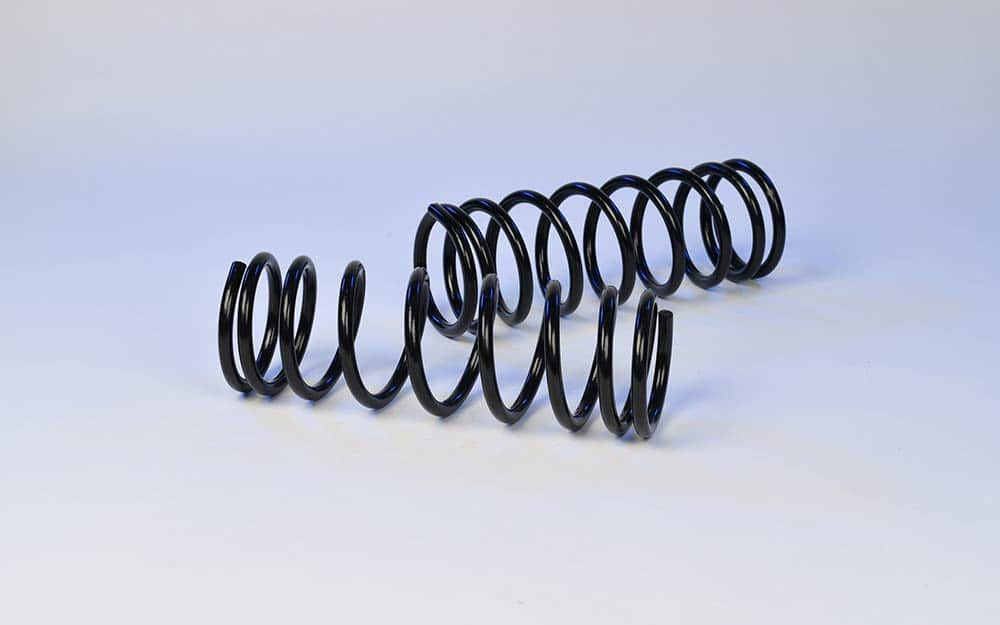
Coil springs
RESTORING YOUR VEHICLE’S ALIGNMENT, HANDLING AND HEIGHT
Why Are Coil Springs Important?
Coil springs support your vehicle at its appropriate ride height, absorb and cushion imperfections in the road and are an integral component to retain proper suspension geometry and alignment.
In regular service, coil springs can lose their original spring height or spring rate. Eventually, this may cause your vehicle to sag, forcing its suspension geometry and alignment out of spec. This sag can put unwanted strain and load onto other related components, such as the steering system, control arms, tires and wheel bearings, potentially causing premature failure.
Generally, coil springs may be considered as constant or variable rate:

Variable Rate Springs
Adjust as load increases, stiffening to compensate.

Constant Rate Springs
Retain a constant profile throughout the entire load range.
Alignment Aids
BUILT TO SOLVE YOUR ALIGNMENT PROBLEMS
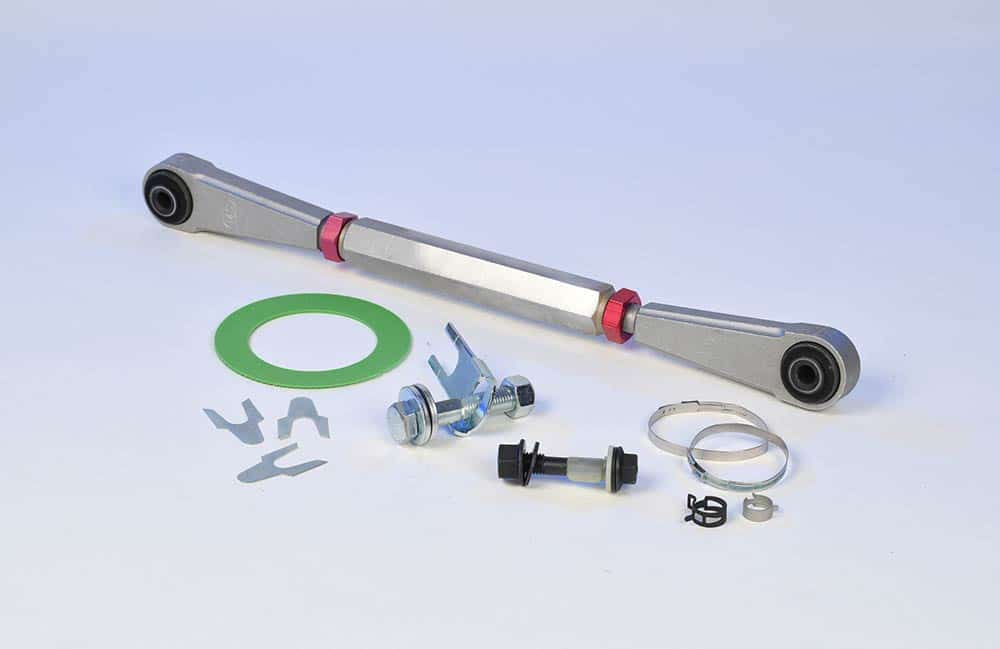
Why Are Alignment Aids Important?
Alignment aids are unique replacement components that allow for a wider range of camber, caster and toe adjustments on the front or rear of your vehicle. These aids can be adjustable ball joints, control arms, bushing sleeves or shims.
Alignment aids are typically needed when you are faced with problematic vehicle alignment issues. They provide a specific range of adjustments, allowing your vehicle to return to its proper suspension geometry and alignment angles. By bringing your vehicle’s handling and ride characteristics back up to spec, alignment aids can help you avoid costly repairs associated with misalignment.